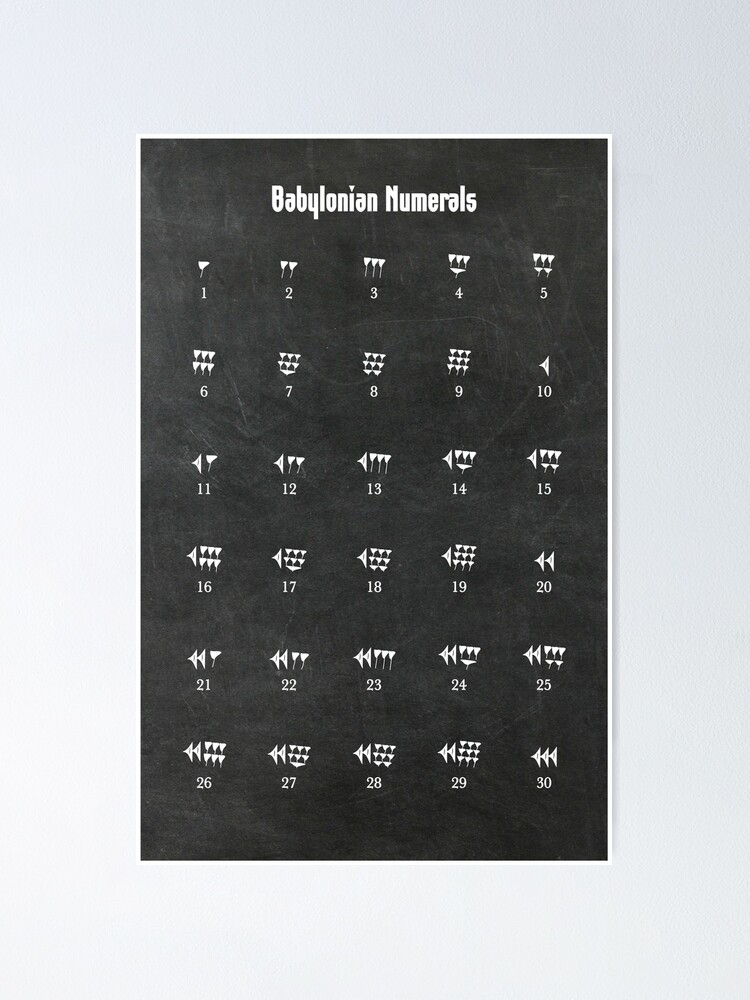

Their temples were massive structures made of brick with an actual drainage system during times of rain (Babylonia, 2010). The Babylonians made many clay structures due to the abundance of clay and lack of stone in the area (Babylonia, 2010). The earliest mention of the city of Babylon can be found in a tablet dating back to the 23rd century BCE (Babylonia, 2010). Video: Ancient Civilizations and Number Systemsīabylonia was an ancient cultural region in central-southern Mesopotamia (present-day Iraq), with Babylon as its capital (Babylonia, 2010). Imagine theĬhallenge of writing a date as a number in a normal base 20 system. Our numbers will be multiplied by 20 nx360 starting with the digit to the left of the least significant digit in our number. The next digit to the left is multiplied by 360 * 20 = 7200Īnd so on. Least significant digit is multiplied by 20 0, but instead of the nextĭigit to left being multiplied by 20 1, it is actually multiplied byģ60. What is most intriguing about this culture is that they used aĭifferent base for the calendar year. The chart to the left shows how the numbers 33, 429, and 5125 would be represented. There would be no more than 4 bars stacked (20).

The number three was represented by 3 consecutive dots. The Mayan numbers are similar to our current way of keeping score with 4 lines then a slash through them to represent 5. The Mayan numerals are shown to the left. Scholars studied the minimal amounts of stone tablets with Mayan glyphs and deciphered that the Mayans used a number system of base 20 (Mayan Culture, 2010). Very little of their culture survived in written form due to these events. During this time the Mayan books and writings were all destroyed (Bazin, 2002). The Spanish invaded the Mayan cities in the 1500s. It also had buildings that towered 110 feet above the jungle floor (Bazin 2002). By the third century, one city, Palenque had its own modern drainage system and observatories (Bazin, 2002). They built large temples covered in stucco, many still standing today. They studied the cycles of the moon, earth, and other planets (Bazin, 2002). The Mayas built roads to connect their cities and built structures that are still considered amazing today (Bazin, 2002). The first sign of their being in this area was around 2600 BCE. The Mayas prospered in an area ranging from southern Mexico and the Yucatán Peninsula through Belize, Guatemala, Honduras, and El Salvador (Bazin, 2002). Rather than counting fingers, the Egyptians counted the joints on each of the four fingers on a hand and there are three joints per finger giving twelve joints on a hand. The Babylonians also came up with the concept of a degree being divided into 60 minutes with each minute being divided into 60 seconds. The Babylonians came up with the concept of dividing a day into 24 hours with each hour having 60 minutes and each minute 60 seconds. The number 60 was significant to the Babylonians. It is believed that the Mayans used base 20 because they lived in a warm climate where they did not wear shoes, thus giving 20 fingers and toes. The Mayans used a vigesimal (base 20) number system, the Babylonians used a sexagesimal (base 60) number system, and the Egyptians used a duo-decimal (base 12) number system. In base 10, ten digits are used and those digits are 0 through 9. We use base 10 because we have 10 fingers. History of Bases Used in Ancient Civilizations EDUC 525 - The Converter Box - Number Systems


 0 kommentar(er)
0 kommentar(er)
